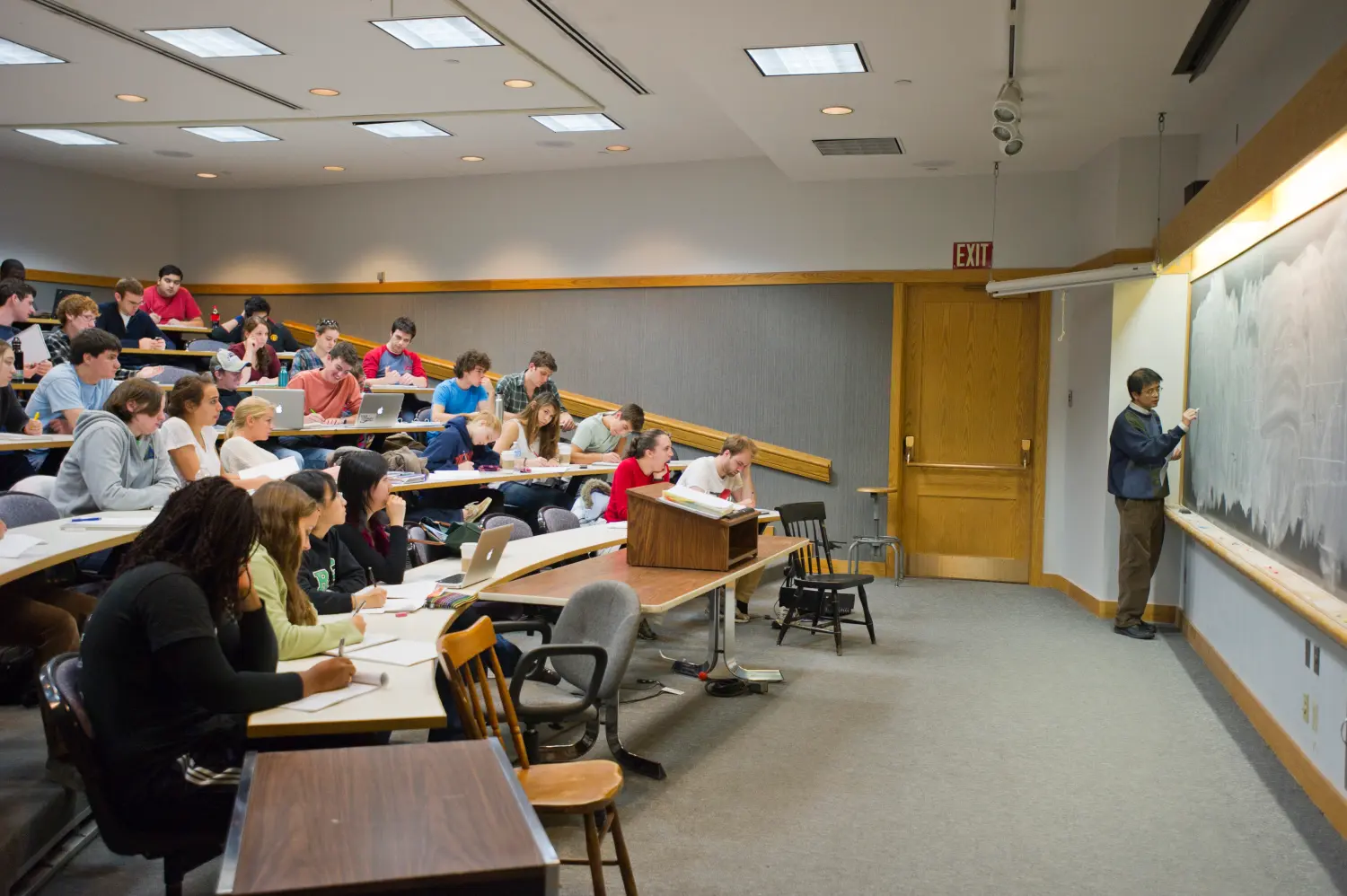Policymakers, researchers, and educators have long studied issues of representation in science, technology, engineering, and mathematics (STEM) fields. Because these fields lead to occupations with high salaries and steady wage growth, understanding inequality among STEM majors has implications for labor market inequality and social inequality more broadly.
Conversations about STEM majors frequently consider the role of “gatekeeping” and “weed-out” courses at the undergraduate level. These courses, typically the introductory sequence for STEM majors, are often difficult and time-consuming. Student performance in these courses has a large impact on what a student eventually chooses to major in.
A positive and encouraging experience in a first-year chemistry course, for example, might cement a student’s choice to major in chemistry. In contrast, a negative experience can have the opposite effect, discouraging the student not only from chemistry but also from related STEM fields. Ostensibly, performance in these gateway courses signals to students that their prospects in the field are based on academic ability only—but we have good reason to believe there may be some noise, and perhaps bias, that undermines the strength of this signal.
Unfortunately, we know these weed-out courses do not weed out students evenly. For example, prior studies have shown that women are more sensitive to their early STEM grades than men, leading to more women leaving STEM fields after earning poor grades than men with similar qualifications. However, to date, comparatively less is known about how factors such as parental education may shape students’ grades in introductory classes and their responses to those grades. Because of the rigid structure of STEM programs, where students must pass first-year introductory course sequences to progress in the major, special attention must be paid to how students experience these classes.
How is performance in weed-out courses related to persistence in STEM fields?
This post focuses on the results of a recent study that I conducted on the different experiences of first- and continuing-generation college students in their introductory STEM course sequences. First-generation students, who do not have a parent with a four-year college degree, make up an increasing proportion of the incoming population of college students. However, their experiences can differ markedly from those of continuing-generation students, who do have a parent with a four-year college degree. In my study, using transcript and survey data from several cohorts of students at three moderately selective universities, I modeled the relationship between first-year grades in introductory courses and student STEM persistence. More specifically, I wanted to know if grades are more discouraging for some students than others.
Grades could differentially influence students’ interest in STEM fields through two pathways. The first is through the distribution of grades themselves given that, even after accounting for background preparation, students may receive systematically different grades in first-year STEM courses. The second is through the ways that students respond to their grades. For example, receiving a B in chemistry might carry a different meaning to an advantaged student than it does to a less-advantaged student.
Results from the study show that all students in the sample were sensitive to these early grades. Students receiving higher grades in their first-year STEM courses were more likely to persist in STEM majors than students with comparatively lower grades. For example, students with A’s in their first-year courses were more likely than students with B’s to major in STEM, who were then more likely than students with C’s to persist in these fields. Intuitively, this is the way that we might expect students to respond to their grades in these courses, if grades are taken by students as a signal of their current and future capabilities in STEM fields.
However, I also found large differences in persistence rates by parental education. At every level of first-year STEM grades, first-generation students were less likely than continuing-generation students to persist in STEM majors, even when accounting for background characteristics and prior preparation. For example, among students earning A’s in their first-year STEM curriculum, continuing-generation students had higher persistence rates than first-generation students. This difference is about twice as large when considering students with around a 4.0 GPA in their STEM courses compared to students with around a 1.0 STEM GPA. In practical terms, this means a first-generation student with A’s in all of her first-year STEM courses is much less likely to stay in STEM than an otherwise similar continuing-generation student. This has important implications for equity and inclusion in STEM majors and in the STEM workforce.
Next, I considered differences in grades received in the first place. When decomposing the overall disparity in persistence rates between first- and continuing-generation students, I found that first-year STEM grades alone accounted for about one-fifth (19%) of the total difference in persistence rates. This suggests that first-year STEM grades are one of the leading drivers of differences in the likelihood of majoring in a STEM field. Interestingly, it’s not that first-generation students are only more sensitive to their grades, but they are also more likely to receive low grades in the first place, even when controlling for students’ background and preparation.
Unfortunately, universities—and STEM programs in particular—are not known to be especially welcoming environments for students from less-privileged backgrounds. Thus, the patterns in this study might be driven by a number of factors related to how differences in social and cultural capital shape opportunity and access for first-generation students. I should also be clear that the results of this study are descriptive in nature and do not necessarily indicate a causal link between grades and persistence. What is apparent, however, is that introductory courses do not provide equal opportunity for entrance into STEM majors.
How can universities create more equitable access to STEM fields?
Of course, performance in STEM courses and the students’ persistence in the major are, ultimately, determined by students’ individual choices and preferences. Yet, this does not imply that the onus is on students themselves to simply persist in the face of challenges and that they bear the blame for their underrepresentation in STEM fields. Rather, we can look at the results for ideas on how institutions of higher education might be able to change their practices—particularly in these introductory course sequences and grading practices—to promote more equitable representation in STEM.
A number of policy changes could be considered. This could include, for example, a move toward universal pass-fail policies for introductory courses, easing students into their new college environments and STEM curricula. Colleges should think carefully about grading curves, in particular, since these grading schemes ignore the fact that privileged students often enter with more prior exposure to the course material, which puts them at an advantage over students learning that material for the first time. Of course, grades provide some useful information to students and others (e.g., for graduate schools and scholarships), so universities might also consider support programs and advising to help students understand the grades they have received and make choices about their future courses.
The way that many universities structure introductory STEM courses works against the very goals of equity that they enunciate. If we want to have a more diverse and equitable STEM workforce, we have to start at the beginning: the experience that students have in their introduction to the discipline.
The Brookings Institution is committed to quality, independence, and impact.
We are supported by a diverse array of funders. In line with our values and policies, each Brookings publication represents the sole views of its author(s).






